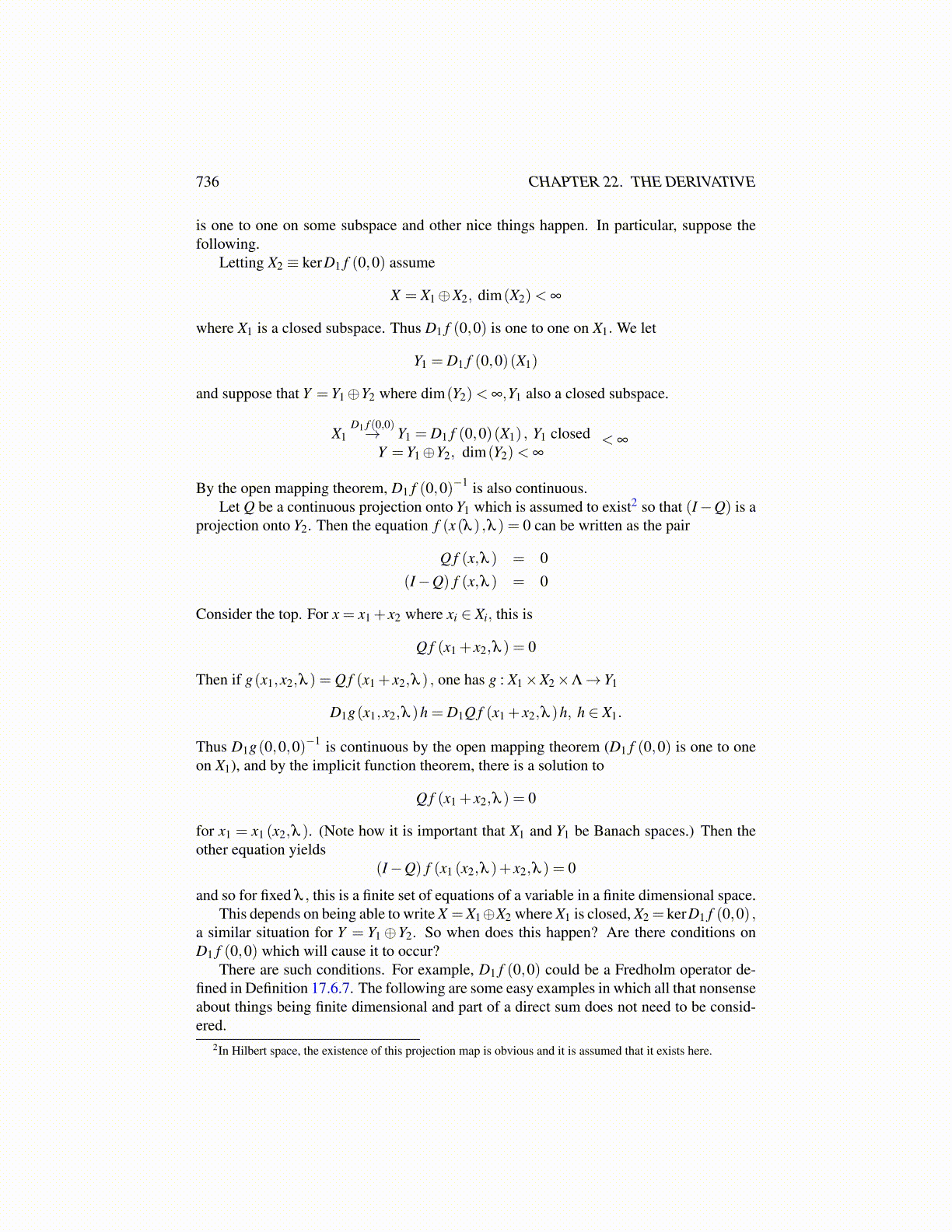
736 CHAPTER 22. THE DERIVATIVE
is one to one on some subspace and other nice things happen. In particular, suppose thefollowing.
Letting X2 ≡ kerD1 f (0,0) assume
X = X1⊕X2, dim(X2)< ∞
where X1 is a closed subspace. Thus D1 f (0,0) is one to one on X1. We let
Y1 = D1 f (0,0)(X1)
and suppose that Y = Y1⊕Y2 where dim(Y2)< ∞,Y1 also a closed subspace.
X1D1 f (0,0)→ Y1 = D1 f (0,0)(X1) , Y1 closed
Y = Y1⊕Y2, dim(Y2)< ∞< ∞
By the open mapping theorem, D1 f (0,0)−1 is also continuous.Let Q be a continuous projection onto Y1 which is assumed to exist2 so that (I−Q) is a
projection onto Y2. Then the equation f (x(λ ) ,λ ) = 0 can be written as the pair
Q f (x,λ ) = 0(I−Q) f (x,λ ) = 0
Consider the top. For x = x1 + x2 where xi ∈ Xi, this is
Q f (x1 + x2,λ ) = 0
Then if g(x1,x2,λ ) = Q f (x1 + x2,λ ) , one has g : X1×X2×Λ→ Y1
D1g(x1,x2,λ )h = D1Q f (x1 + x2,λ )h, h ∈ X1.
Thus D1g(0,0,0)−1 is continuous by the open mapping theorem (D1 f (0,0) is one to oneon X1), and by the implicit function theorem, there is a solution to
Q f (x1 + x2,λ ) = 0
for x1 = x1 (x2,λ ). (Note how it is important that X1 and Y1 be Banach spaces.) Then theother equation yields
(I−Q) f (x1 (x2,λ )+ x2,λ ) = 0
and so for fixed λ , this is a finite set of equations of a variable in a finite dimensional space.This depends on being able to write X =X1⊕X2 where X1 is closed, X2 = kerD1 f (0,0) ,
a similar situation for Y = Y1⊕Y2. So when does this happen? Are there conditions onD1 f (0,0) which will cause it to occur?
There are such conditions. For example, D1 f (0,0) could be a Fredholm operator de-fined in Definition 17.6.7. The following are some easy examples in which all that nonsenseabout things being finite dimensional and part of a direct sum does not need to be consid-ered.
2In Hilbert space, the existence of this projection map is obvious and it is assumed that it exists here.